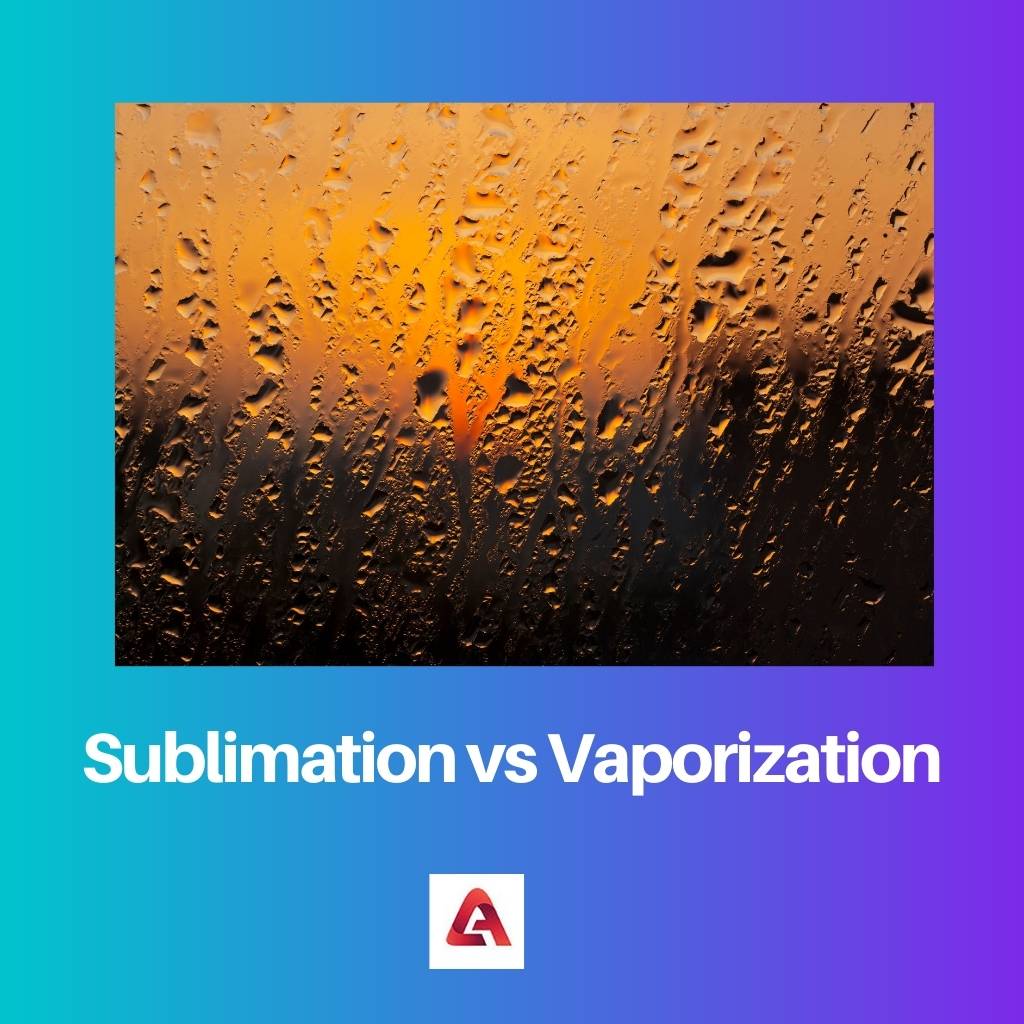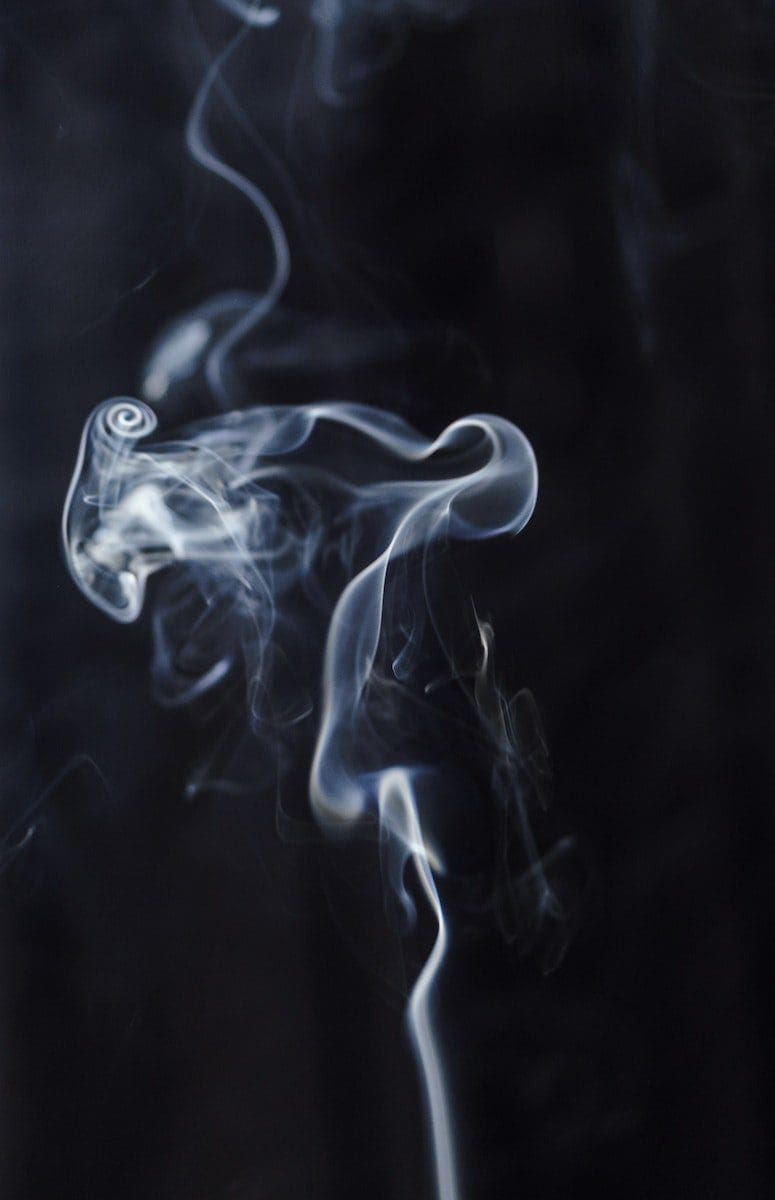There are many objects all around us. Some are rigid, some we cannot see properly with the naked eye, and some are watery. All these objects or materials have been categorized into different states. There are three main states, Solid, Liquid, and Gaseous. They can change their state also.
Generally, the order of conversion is solid changes into liquid and then liquid into gaseous form. But then it was noticed that it is not always true that states convert in this order.
For example, it was discovered that some materials can turn from solids to directly in gaseous form and while some liquid to gaseous form. These processes are called Sublimation and Vaporization, respectively.
Key Takeaways
- Sublimation is changing a solid directly into a gas without going through the liquid state, whereas Vaporization is changing a liquid into a gas.
- Sublimation occurs when the pressure of the surrounding atmosphere is lower than the vapor pressure of the solid. In contrast, Vaporization occurs when the vapor pressure of the liquid is higher than the surrounding atmospheric pressure.
- Sublimation is used in freeze-drying, where water is removed from a substance while it is frozen, whereas Vaporization is used in steam turbines to generate electricity.
Sublimation vs Vaporization
The difference between Sublimation and vaporization is that during the conversion process, Solid matter turns into direct vapour in sublimation. No liquid state is involved, while liquid matter converts into Vapour during Vaporization. This leads them to differ in terms of the initial stage of matter and start converting at different temperatures.

Sublimation is a transitional phase where matter does not go through a liquid state but converts into a gaseous state directly from the solid state. During this method, molecules break and release into thin air.
This is an endothermic reaction. An example can be dry ice which turns into carbon dioxide at room temperature and pressure. Vaporization is a transitional phase where the liquid turns into gas under a certain temperature and pressure.
This process occurs when the temperature is relatively higher than normal, making molecules move quickly, breaking the intermolecular bonds of the atom. Water is the prime example of this process of how water, by increasing the temperature, can be turned into vapours.
Comparison Table
| Parameters of Comparison | Sublimation | Vaporization |
|---|---|---|
| Meaning | Conversion of matter from solid to gaseous. | Conversion of matter from liquid to gaseous. |
| Initial Stage | Solid | Liquid |
| Missing State | Liquid | Solid |
| Temperature required | 175°C | 100°C |
| Example | Dry ice, and Naphthalene | Water or any other liquid. |
What is Sublimation?
There are three states of matter, solid, liquid, and gaseous. Ice is solid-state, water is the liquid state, and water vapour is the gas state. Therefore it is clear how one particular substance can have all the states in one way or another.
There are processes called sublimation and vaporization. Both of them are related to the conversion of one state into another. The process of turning solid into gas directly is called Sublimation. This process takes place only below the triple point of the substance.
Therefore only solids with high pressure at their triple point can go through this transitional process. There are not many substances that undergo this process. Only a few can go through this process.
A common example is dry ice; it is a solid form of carbon dioxide, which quickly turns into a gaseous state when exposed to room temperature. Another example could be naphthalene, which also sublimates at room temperature.
It occurs when winds are dry and humidity is relatively low. The opposite of this process is deposition, under which under changes into a solid substance, such as in cold temperatures, water turns into ice or snow.

What is Vaporization?
The conversion of liquid into gas state is called the process of vaporization. Due to an increase in kinetic energy, the force between molecules decreases. In the end, they release into the air in the form of vapours.
This is a very common process that takes place every day and everywhere. For example, lake water during sunny days gets vaporized due to high temperatures or when people boil water for cooking or any other activity. Another example could be the salt that is being made with the help of the vaporization process.
Factors affecting the process:
- Evaporation material concentration.
- Air rate flow.
- Amount of minerals present in the liquid.
- Intermolecular forces.
- Pressure.
- Area surface.
- Substance’s Temperature.
There are two types or modes of vaporization, i.e., evaporation and boiling.
Evaporation: this process of Turning liquid into vapours takes place below the boiling temperature on the surface. Applications of this include printing and pressing, spectroscopy and chromatography, drying clothes, etc.
Boiling occurs when ambient pressure is equal to or less than the equilibrium pressure. It occurs at boiling point or boiling temperature. Applications include Air Conditioning and refrigerators to make potable water for cooking, etc.

Main Differences Between Sublimation and Vaporization
- Both Sublimation and Vaporization are conversion processes, but during the process of Sublimation, hard and rigid solid materials directly convert into gaseous and hardly seen gas in the gas, while during the process of Vaporization, liquid matter turns or covert into the gaseous state.
- Both Sublimation and vaporization have the same final state, i.e., gaseous state, but they differ when it comes to the initial state. During Sublimation, the matter has an initial state of solid, while in Vaporization initial state of matter is liquid.
- Both processes miss a state of matter during their respective process. In Sublimation missing state is liquid as sold directly turns into gas, while in Vaporization, it is a solid state.
- Both of them starts at a different temperature. To start the sublimation process minimum temperature required is 175°C, while during the Vaporization process, the temperature requirement is at least 100°C.
- Both of the processes include different types of materials as not every material can directly turn into a gas from being solid. Dry ice and Naphthalene are examples of materials that go under the sublimation process. Examples of vaporization include water or any other liquid material.
- Also, not all solid matter can perform sublimation. There are a few exceptions only while every liquid matter can undergo vaporization.

- https://www.sciencedirect.com/science/article/pii/S0022354915446581
- https://chemistry-europe.onlinelibrary.wiley.com/doi/abs/10.1002/cphc.202000108
- https://pubs.acs.org/doi/abs/10.1021/acs.jcim.6b00033
- https://www.osti.gov/biblio/4513757
- https://www.sciencedirect.com/science/article/pii/S0967064501001382
- https://www.sciencedirect.com/science/article/pii/S0019103503003191

The practical applications of sublimation and vaporization are fascinating and well-explained.
Great article, very informative and well explained.
I couldn’t agree more. There’s a lot to learn from this piece.
The details about the process of vaporization are quite insightful, especially the factors affecting the process.
The examples provided make it easier to grasp the concepts of sublimation and vaporization.
The comparison table is very helpful to understand the differences between sublimation and vaporization.
I appreciate the clear explanation of sublimation and vaporization, it’s very enlightening.
The clear distinction between sublimation and vaporization is excellently presented in this article.
I found the examples of substances undergoing sublimation and vaporization to be very illustrative.
The factors affecting the vaporization process are intriguing and add depth to the discussion.
This article has broadened my understanding of sublimation and vaporization, thank you.